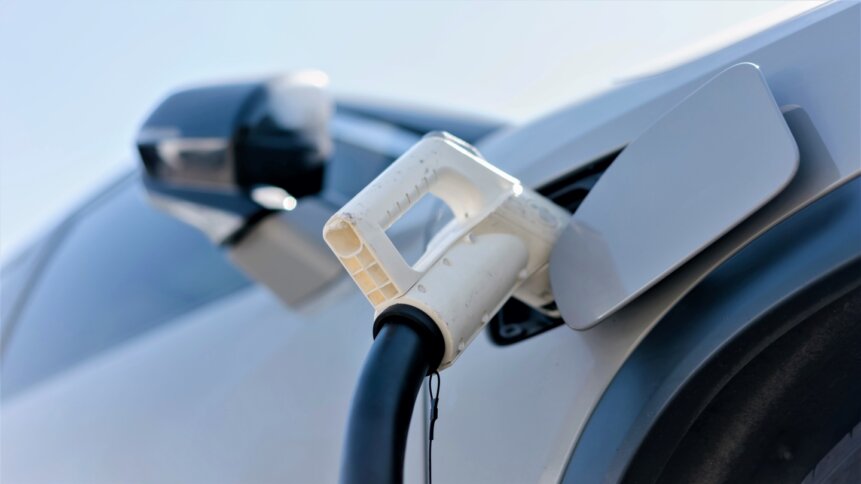EV battery recycling – circular economy charges up

Road wheels aren’t the only things going around on electric vehicles (EVs) as competition for battery materials heats up. Legislation is reshaping supply chains towards the circular economy, which includes ramping up EV battery recycling. Sustainability requirements for batteries in the EU mandate that products such as industrial or EV units have to be collected in full at the end of their useful lifetimes.
“All collected batteries have to be recycled and high levels of recovery have to be achieved, in particular of valuable materials such as cobalt, lithium, nickel, and lead,” write the EU’s legislators. Back in 2020, it was estimated that just 12% of secondary materials and resources were being brought back into the economy. This points to the huge potential for products to be reused, repaired, and recycled.
The EU’s circular economy action plan has already seen initiatives on electronic goods, including the right to repair. And on EV battery recycling, there are various factors to consider. Rising fuel prices and increasing numbers of cities adopting low-emissions zones, which penalize drivers of vehicles powered by fossil fuels, are just a couple of motivators. EVs are proving to be popular with consumers. Norway, which has banned the sale of cars with internal combustion engines from 2025, has reportedly already met its target.
Fun factor
EVs are easy to drive, and more appealing than many drivers had previously imagined. Independence from fuel shortages combined with low running costs are encouraging more drivers to consider switching from petrol- and diesel-powered designs, which have dominated the automotive market for decades.
Delivery giants such as UPS are investing heavily in electrification to lower their emissions. And governments around the world are making clear their desire for so-called ‘new energy vehicles’ (NEVs). Reuters reports that 50% of new car sales in China – the world’s largest automotive market – will be NEVs by 2035. India wants cab operators and food delivery firms to be electrified by 2030, and North America too is steering drivers toward battery power.
But with demand for EVs soaring – where will all of the batteries come from? In many cases, the hope is that car-makers will be able to tap into the circular economy. And digital record keeping will help. “By 1 January 2026, each industrial battery and electric vehicle battery placed on the EU market or put into service and whose capacity is higher than 2 kWh shall have an electronic record (‘battery passport’),” write the EU’s legislators.
Supply chain labeling
Traceability information across the supply chain will include the country of origin of the raw materials as well as the quantities present in the battery placed on the market. There are environmental considerations that relate to the mining of battery materials. The extraction of lithium from salt flats can divert hundreds of thousands of gallons of water from agricultural operations. Also, chemicals can find their way into the water supply, harming wildlife.
EU legislation will require batteries to have minimum amounts of recycled content, lowering the environmental burden, but also reducing Europe’s dependence on raw materials. By 2035, EV battery recycling could provide at least 22% of the lithium and nickel and 65% of the cobalt necessary for European production, according to analysis by Transport & Environment – a clean transport campaign group.
Most car manufacturers offer eight-year, 100,000-mile battery warranties, which – in simple terms – would mean that batteries recycled today first hit the road in 2014. Tesla – a pathfinder in EVs – has been selling vehicles in Europe for more than a decade, but it’s clear that one of the current limitations on EV battery recycling is availability. Fortunately, this is something that will take care of itself thanks to rising sales.
Gigafactories
To get a measure of how many electric vehicles are expected to be on the road, it’s useful to look at the growth of the so-called ‘gigafactory’. The West Midlands gigafactory, which will be the largest in the UK, aims to produce enough batteries to power 600,000 EVs per year (equivalent to 60 GWh). Scheduled to be production ready by 2025, the facility will be the size of 75 soccer pitches and powered by 100% sustainable energy, according to the prospectus.
Transport & Environment – in its comprehensive 2021 report [PDF] – highlights plans for 22 battery gigafactories to be located in the EU over the next decade (this is up from 14 in 2019). Companies involved include ACC, FREYR, LG Chem, Morrow, and Northvolt – to give just a few examples. And the infrastructure could provide 700 GWh of demand by 2030.
As well as powering EVs, batteries could play a role in vehicle recharging too. Projects such as the Scottish Green Battery Complex, which involves Canadian developer Amp Energy, will help store renewable electricity that would otherwise be wasted (during periods of high generation, but low consumer demand).
The facility, due for completion in 2024, comprises two 400 MW projects that Amp claims will be the two largest grid-connected battery storage facilities in Europe. “Over the coming years, Amp’s Scottish battery facilities will enable up to 1,750 GWh per year of additional renewable energy to be generated in Scotland and transported to other regions of the UK, equivalent to enabling approximately 500 MW of new offshore wind deployments,” said the firm.










